
Project Managers are the Change Agents who build tomorrow. Why do we say this? Because we can, and we do! This page introduces you to our ChangeAgents Blog Posts.
What qualifies me to offer these insights? In addition to my consulting firm, I have worked for over 40 years, with our industry’s professional organizations. My purpose for doing so: to create beneficial change–both for their members, and for society. Thus, the wide-ranging set of topics in this blog series.
Key to beneficial societal change are two professional organizations with whom I have engaged:
- IPMA®, the International Project Management Association. This is the world’s first professional association for project managers, and is a federation of national associations; and,
- PMI®, the Project Management Institute. This was originally a USA-based professional association for project managers. Now, they have moved from one exam-based certification in project management, to a wide range of certifications, offered worldwide.
Beyond certifications, our thrust, for over 40 years, is to improve the Competence of Project Managers. This improves their initiatives, their results, their stakeholders’ satisfaction, and their organizations’ success.
Learn more about competence–beyond knowledge and exam cramming–by reading our wide-ranging blog posts and articles. We also suggest that you review the success stories here on our website. Meanwhile, if you have comments about our blog posts, I’d love to hear them! Please use Contact Us on our LinkedIn page! to give us your feedback.
This page provides links, in newest-first sequence, to our ChangeAgent Blog Posts. Enjoy!
- Introducing A Very Interesting New Book!
- Does Knowledge Want To Be Managed?
- Advantages and Risks for PMs in the Gig Economy
- What Is Project Management?
- PMR Interview: Small Projects
- Everything I Know About Project Time Management, I Learned in Sports Car Racing
- What Makes IPMA’s Certifications Stand Out?
- We Bring Back Our PM Pills!
- You Might Be a Project Manager If…
- Imagine a World Where All Projects Succeed
- Prototyping and Agile: Twins, Separated at Birth?
- Exploding the Myth of PM Best Practices
- My First Project Portfolio
- Learning PM Success Secrets From Product Managers
- It’s More Than Project Take-off and Landing
- Let’s Start at the Start, and Finish at the Finish!
- Are You a PRO or an Amateur?
- Mission Possible
- “It’s a lot more fun when you are up there!”
- Efficiency and Effectiveness in Project Management
- Do Project Managers Need Business Analysts?
- Horse Racing and Project Team Parallels
- Navigating the S’s in Our Projects
- Public Speaking — Without PowerPoint
- Dinner Speech at PMAF Congress, Helsinki, part 2
- Dinner Speech at PMAF Congress, Helsinki, part 1
- The Importance of Eye Contact In Web Meetings
- Project Managers: Playing Nice With Others
- Do You Manage the Leading or Lagging Factors?
- The Importance of Effective Speaking
- Where Did Stakeholder Come From?
- The Importance of Writing Well
- Project Management: Delivering The Promise
- Five Foundations for the Advancement of Project Management
- Stakeholders Benefit From a PM Perspective
- The Wonders of the Emperor Qin Project Portfolio
- The Rise of Project Management
- Changing the Way Things Are …
- Applying Our Six W’s For Managers In The Middle
Click this link to see more ChangeAgent Blog Posts, from July 2009, to May 2011.

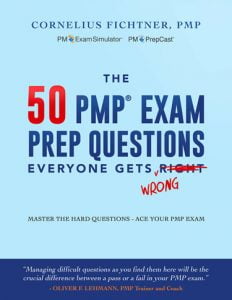 I have the pleasure of introducing a very interesting new book, by Cornelius Fichtner: The 50 PMP
I have the pleasure of introducing a very interesting new book, by Cornelius Fichtner: The 50 PMP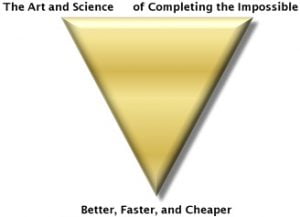

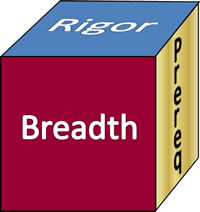
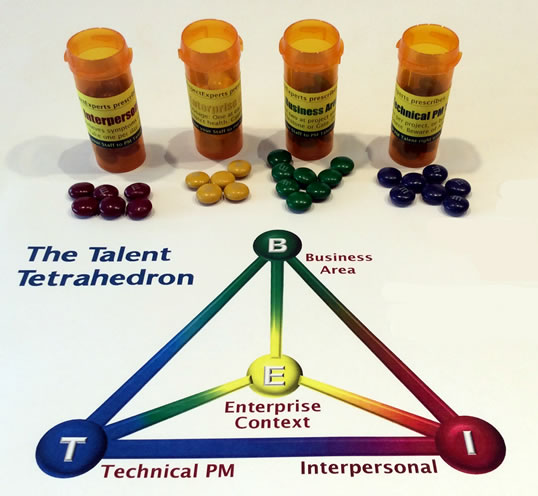
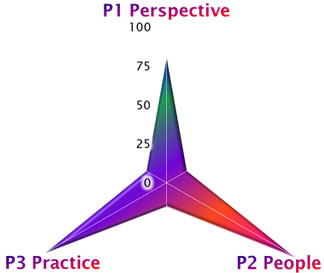 This year, the “You might be …” set-up came to mind as I was putting the finishing touches on an update to IPMA-USA’s PM-SAT. PM-SAT is a self-assessment of knowledge. It is based on the new, 4th Edition of the IPMA Individual Competence Baseline. What makes this 4th Edition especially interesting is the inclusion of 2-5 Key Competence Indicators for each competence element.
This year, the “You might be …” set-up came to mind as I was putting the finishing touches on an update to IPMA-USA’s PM-SAT. PM-SAT is a self-assessment of knowledge. It is based on the new, 4th Edition of the IPMA Individual Competence Baseline. What makes this 4th Edition especially interesting is the inclusion of 2-5 Key Competence Indicators for each competence element. I have used this article’s title as my kick-off phrase at many project-related keynotes and presentations over the last few years. Most audiences immediately “lean into” the thought, and its ramifications. For example, in Moscow, Hong Kong, Beijing, Tianjin, Brussels, and in the USA, my audiences immediately took notice. They immediately became engaged, and were eager to hear more.
I have used this article’s title as my kick-off phrase at many project-related keynotes and presentations over the last few years. Most audiences immediately “lean into” the thought, and its ramifications. For example, in Moscow, Hong Kong, Beijing, Tianjin, Brussels, and in the USA, my audiences immediately took notice. They immediately became engaged, and were eager to hear more. Prototyping and Agile: Twins, Separated at Birth? We have written before about the intelligent application of Agile methods in Information Technology (IT) projects. See part 3 of our 4-part 2011 series,
Prototyping and Agile: Twins, Separated at Birth? We have written before about the intelligent application of Agile methods in Information Technology (IT) projects. See part 3 of our 4-part 2011 series,  Exploding the Myth of PM Best Practices: What are the Best Practices in the world of project and program management (PPM)? Are there a few immutable truths that are transferable across nations, organizations, industries, cultures, and project teams? I often see assertions promoting PM Best Practices. This despite my belief that the phrase is an oxymoron. That our discipline is not yet mature enough to have universal best practices. This article recaps discussions on best practices in my years as a PM practitioner, then as a consultant.
Exploding the Myth of PM Best Practices: What are the Best Practices in the world of project and program management (PPM)? Are there a few immutable truths that are transferable across nations, organizations, industries, cultures, and project teams? I often see assertions promoting PM Best Practices. This despite my belief that the phrase is an oxymoron. That our discipline is not yet mature enough to have universal best practices. This article recaps discussions on best practices in my years as a PM practitioner, then as a consultant.
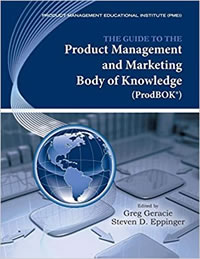 A Product BOK
A Product BOK
 Given this syndrome, these sadly misinformed project managers and teams should chart their projects’ more like the one at left. After all, they are starting and ending their part of the project in the middle!
Given this syndrome, these sadly misinformed project managers and teams should chart their projects’ more like the one at left. After all, they are starting and ending their part of the project in the middle!
 The tongue-in-cheek title of this article, as many will recognize, refers to PRO, the Performance Rated Organization standard. This is one of the few organizational PM assessments that is not just another maturity model. Not that we dislike Maturity Models. We have used SEI CMM/CMMi for (gee, approaching 40) years. And, we like it a lot for Information Technology organizations.
The tongue-in-cheek title of this article, as many will recognize, refers to PRO, the Performance Rated Organization standard. This is one of the few organizational PM assessments that is not just another maturity model. Not that we dislike Maturity Models. We have used SEI CMM/CMMi for (gee, approaching 40) years. And, we like it a lot for Information Technology organizations.
 It is the Horse that wins the race, right? Well, not so fast (so to speak). A fast horse, in most cases, is a key to success, but the Jockey has a key role as well. That role includes deep understanding and communication with the horse. It also includes the in-race tactics that require instantaneous judgements when situations change.
It is the Horse that wins the race, right? Well, not so fast (so to speak). A fast horse, in most cases, is a key to success, but the Jockey has a key role as well. That role includes deep understanding and communication with the horse. It also includes the in-race tactics that require instantaneous judgements when situations change.
 90% of Success is starting your project right! If you have not reviewed parts 1-3 of this article series, we suggest that you go do that before continuing here. Some following this series are a bit incredulous. One week or less, huh? What a pipe-dream! Some teams spend an entire week and get 10% that much information, much less the needed levels of management commitment. We mentioned our Rapid Initial Planning processes. Many organizations perform this type of quick-start approach today, so our method is no longer anything new. The RIP is a way seek the prerequisites that smart project managers assure for every project.
90% of Success is starting your project right! If you have not reviewed parts 1-3 of this article series, we suggest that you go do that before continuing here. Some following this series are a bit incredulous. One week or less, huh? What a pipe-dream! Some teams spend an entire week and get 10% that much information, much less the needed levels of management commitment. We mentioned our Rapid Initial Planning processes. Many organizations perform this type of quick-start approach today, so our method is no longer anything new. The RIP is a way seek the prerequisites that smart project managers assure for every project.